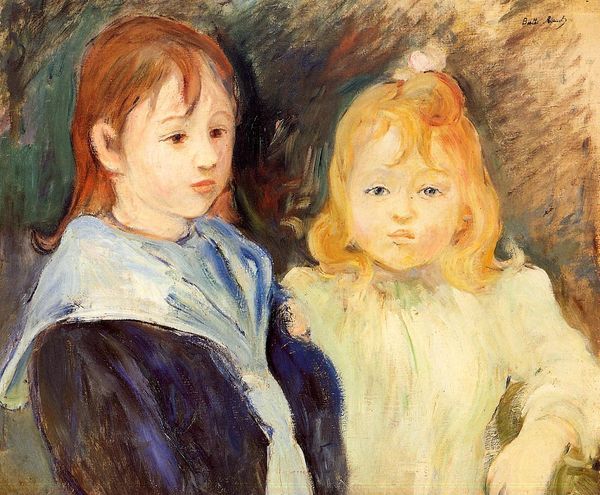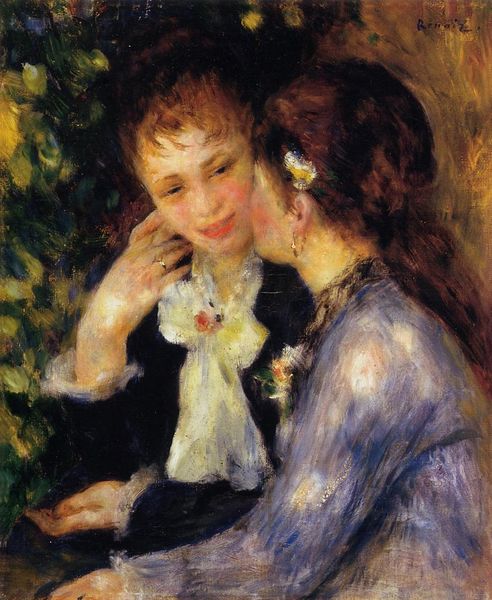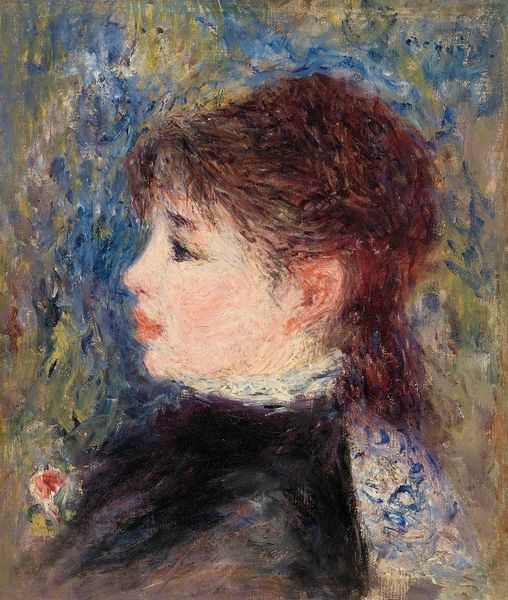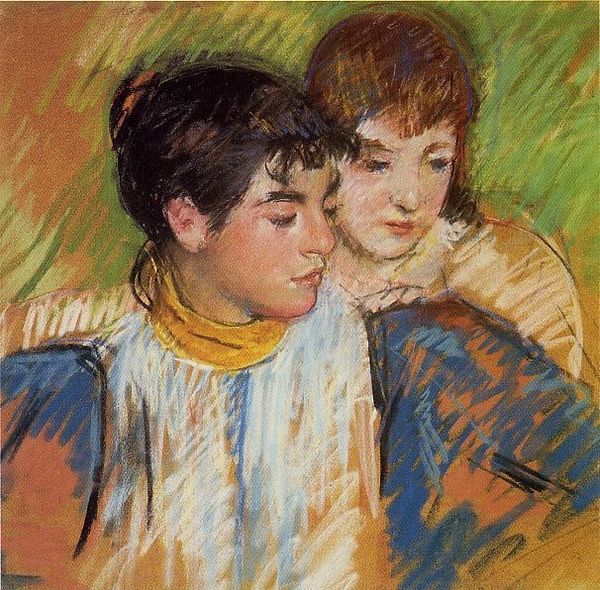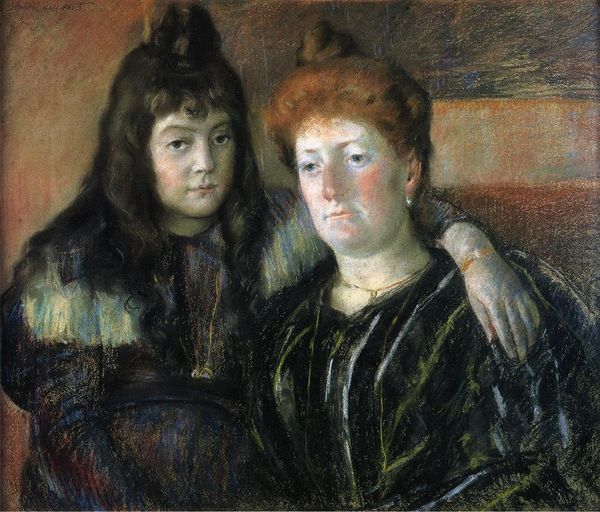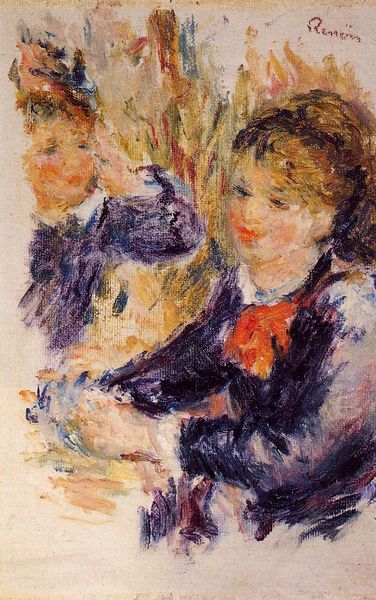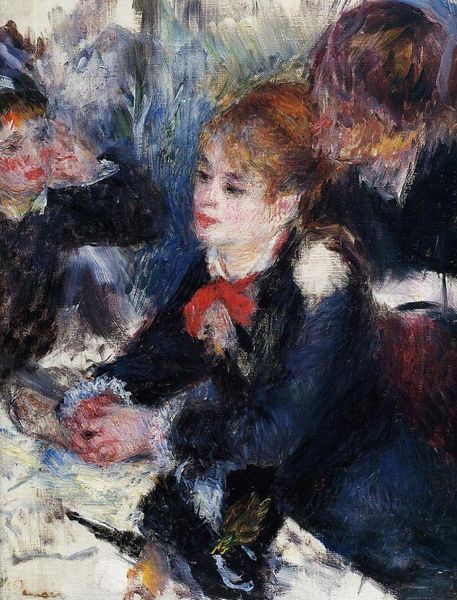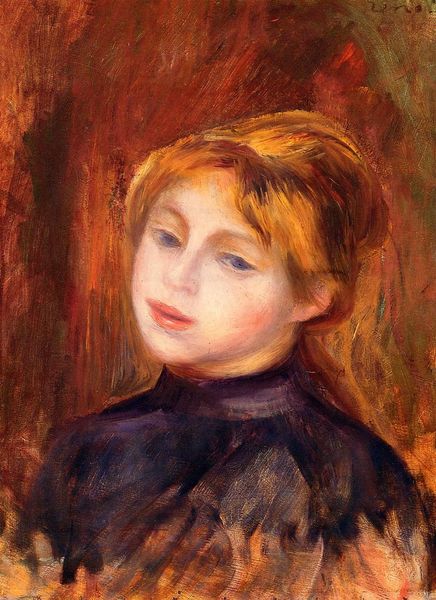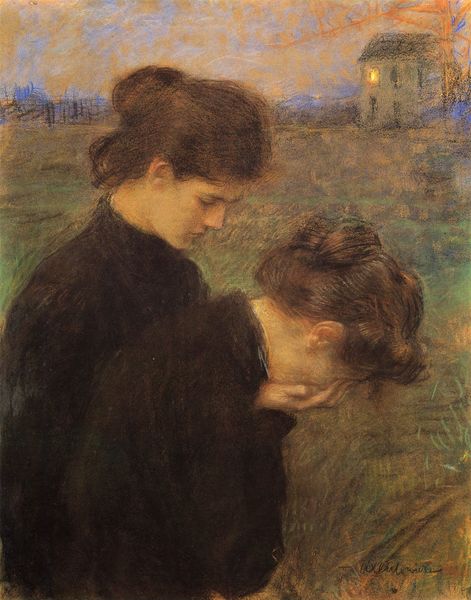
painting, oil-paint
#
portrait
#
portrait
#
painting
#
impressionism
#
oil-paint
#
genre-painting
Copyright: Public domain
Curator: Look at this canvas before us, "Young Man and Young Woman," crafted by Pierre-Auguste Renoir around 1876. Notice the vibrancy. Editor: My first thought is how informally intimate this piece feels, yet these figures are undeniably in their finest attire. Is that contrast intended, I wonder? Curator: Likely so! Renoir, working with oil paints, often played with such contrasts. This wasn't about capturing a specific moment with perfect realism, but evoking a sensation of modern life. Editor: It’s also about class display, wouldn't you agree? A carefully constructed narrative where clothes maketh man, so to speak. Note the formal attire – his bow tie, her fashionable dress, the way light glances off the fabric. What can we decode in these visual symbols? Curator: Absolutely. And while Renoir presents a picture of bourgeois society, he doesn't ignore the labor required to maintain that image. The materiality itself – the costly pigments ground and mixed, the fine linen of the canvas – speaks of a certain economic reality. We're not just seeing pretty faces; we're glimpsing the machinery of production behind leisure. Editor: And it’s equally important to think about how the painting speaks about an awakening modern sexuality as displayed through portraiture – his gaze is demure but knowing. The rosy blush on her cheeks suggests a flush of intimacy. It evokes a new mode of relationship. How the emerging urban setting facilitated the negotiation of space, intimacy, and even the subtle power play within modern romantic interactions. Curator: A space carved out within established class structures, I think you're right. Consider Renoir's choice of brushwork. Rather than blending perfectly, the strokes remain visible, drawing attention to the hand that made this. It invites us to consider not only what is represented, but how it was created and its presence as an object to purchase and be sold, even desired. Editor: So, what we initially perceive as a mere snapshot reveals layers of societal underpinnings. The emotional subtext combined with the outward image really shows a changing social landscape, right? Curator: Indeed. It shows how impressionism engaged in and portrayed the societal mechanisms during its rise. Editor: Well, I now see much more in these figures and in this moment captured through symbolism and material display! Thanks for unveiling that with me.
Comments
No comments
Be the first to comment and join the conversation on the ultimate creative platform.
